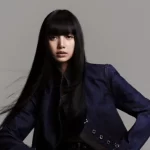This fall, the Metropolitan and three other museums give female designers their due.
It is one of those ironies rarely discussed in the fashion industry — that a world focused largely on catering to (or exploiting, depending on how you look at it) the dreams and identity of women is run mostly by men.
Men run the biggest luxury groups; men make up the largest percentage of the chief executives; and for years the most celebrated designers who take their bows at the end of the runways of the biggest global brand names were men.
To a certain extent, that dynamic has finally begun to shift: In 2016, Dior named its first female creative director for women’s wear, Maria Grazia Chiuri; in 2019, Chanel appointed its first female designer since Coco, Virginie Viard; Hermès has women at the head of its women’s and men’s lines, Nadège Vanhee-Cybulski and Véronique Nichanian; and Phoebe Philo’s return this fall under her own name may be the most anticipated new line of the year.
But LVMH, the largest luxury group in the world and Dior’s owner, has only two other female designers at its 14 total fashion brands (plus a partnership with Stella McCartney). Kering, the second largest fashion-focused global luxury group, has but one female designer among its six ready-to-wear brands: Sarah Burton of Alexander McQueen. There’s still a long way to go.
Which is why the announcement that the Costume Institute of the Metropolitan Museum of Art will devote its fall show to a survey of the work of female designers is so striking. Perhaps even more shocking is the fact that this is the Costume Institute’s first such retrospective in the roughly 85 years of its existence.
While the Costume Institute has held a sprinkling of single shows dedicated to the work of women who changed fashion (Coco Chanel, Madame Grès, Rei Kawakubo, Elsa Schiaparelli and Miuccia Prada), it has never before taken a broad look at the female fashion canon — or, indeed, posited that there is a female fashion canon and that it should be a larger part of the general fashion canon.
Even more notably, when the Met show opens on Dec. 7, it will be the punctuation mark at the end of months of museum shows celebrating women.
The correction starts in September with “Ann Lowe: American Couturier” at Winterthur in Delaware, the largest exhibition yet of the work of the visionary behind Jackie Kennedy’s wedding dress and a Black designer who remained unsung for decades.





Next up, in October, is “Mood of the Moment: Gaby Aghion and the House of Chloé” at the Jewish Museum in New York, the first major exhibition devoted to the brand and its founder to be held in the city. That will be followed in November by “Iris van Herpen. Sculpting the Senses” at the Musée des Arts Décoratifs in Paris. All of which should add up to a potent reminder of the breadth and contributions of women designers — not to mention a spur for the future.
“It can be complicated to do a show based on identity,” said Mellissa Huber, an associate curator at the Met’s Costume Institute and the co-curator, with Karen Van Godtsenhoven, of the museum’s show “Women Dressing Women.” “We don’t want to categorize all female designers as working the same or being the same. Perhaps that’s one thing that deterred people in the past. But this exhibit really is intended to be about celebration and acknowledgment.”
As it happens, Ms. Huber and Ms. Van Godtsenhoven had proposed similar female-focused retrospective shows to Andrew Bolton, the Costume Institute’s curator in charge, around the same time in 2019, the year before the 100th anniversary of women’s suffrage. They decided to team up, but the Covid-19 pandemic intervened, postponing the show to this year.
The result showcases the work of about 70 designers held in the Costume Institute’s collection, which stretches from the turn of the 20th century to today and includes names both famous (Jeanne Lanvin, Claire McCardell) and little known (Augusta Bernard, Madeleine & Madeleine). And it is a reminder that once upon a time, the industry looked very different.
“The ’20s and ’30s were a period when women designers were incredibly active and prolific, and it’s the one moment in history when women actually slightly outnumbered men in leading the creative direction of fashion,” Ms. Huber said. “But that moment never really, truly occurred again.”


As to why the shift, Ms. Huber said it had to do with “gender and social change and a lack of confidence on the part of the financial community to invest in women” after World War II. “When we had the New Look in ’47 with Dior, there was a major tidal change,” she continued. “We’ve never entirely recovered.”
To illustrate how we got here, the Costume Institute show traces the work of female designers from their anonymous beginnings, when, Ms. Huber said, “many women were working in a field that didn’t recognize the contributions of individual makers” through the hegemony of the French couture houses, when Chanel, Schiaparelli, Vionnet and Grès dominated.
Then it moves on to what Ms. Huber calls “the boutique generation” of the 1960s — designers like Mary Quant and Bonnie Cashin, who cleared their own path — culminating in pieces by designers working today and “thinking collaboratively, considering notions of sustainability and inclusivity.”
Along the way the exhibition rights a few historical wrongs, such as the often mistaken attribution of the famous Fortuny Delphos gown solely to the Fortuny founder, Mariano Fortuny, instead of to his wife, Adèle Henriette Negrin Fortuny.
“The Delphos dress is a great example of something that is very canonized, very familiar, even to nonspecialists,” Ms. Huber said. But the pleating patent that had been filed for the gown includes a handwritten note from Mr. Fortuny noting “that Henriette Negrin Fortuny was actually the rightful inventor and that essentially he filed it under his name for expediency,” Ms. Huber said.
“To realize that there was actually another person behind the dress who had been removed from the historical record for so long was astonishing,” Ms. Huber added.
The show also enabled the curators to add the work of at least a dozen new names to the museum’s holdings, including Marine Serre, Anifa Mvuemba of Hanifa and Hillary Taymour of Collina Strada, thus carving out a permanent space for them in the historical record and ensuring, Ms. Huber said, that this is simply the start of “a much longer ongoing conversation.”
“I think it’s a very exciting moment for women designers,” she added. What really matters is what happens next, now that “this critical mass of voices is suddenly coming together.”
Source : The New York Times




























